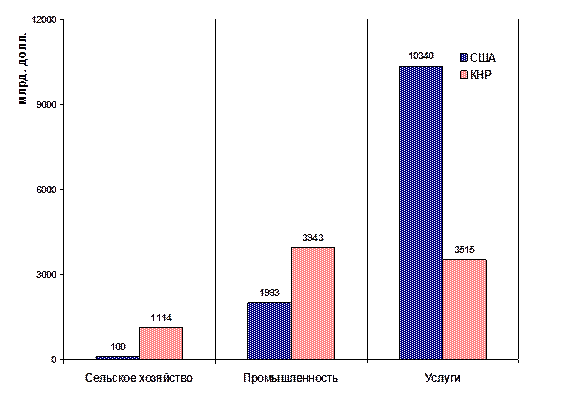 Pre-reading: T. asks the children to look at the story. T. asks (in L1 where necessary) Who is Julie? Who Brad? Where do they work?
Pre-reading: T. asks the children to look at the story. T. asks (in L1 where necessary) Who is Julie? Who Brad? Where do they work?
 T. follows the steps for presenting stories.
T. follows the steps for presenting stories.
 T. asks some questions to check understanding and engages the children. T. asks (avoiding L1 if possible) Who is Brad taking a photo of? Why? What is Cahtter doing in the photos? How do the animals feel?
T. asks some questions to check understanding and engages the children. T. asks (avoiding L1 if possible) Who is Brad taking a photo of? Why? What is Cahtter doing in the photos? How do the animals feel?
PB: page 70, 1. Match.
 T. does the example with the class; T. asks the children to look at the picture 1 and asks Is Julie a photographer? T. elicits No, she isnТt. T. asks the children to read the example sentence.
T. does the example with the class; T. asks the children to look at the picture 1 and asks Is Julie a photographer? T. elicits No, she isnТt. T. asks the children to read the example sentence.
 T. asks the children to read and match the sentences. T. reminds them to look at the story to find the
T. asks the children to read and match the sentences. T. reminds them to look at the story to find the
answers. T. monitors and helps where necessary.
 T. checks the answers.
T. checks the answers.
Practice
PB: page 71, Learn with Tag
 T. asks the children to look at the picture and read TagТs speech bubble. T. asks Why has the verb СplayТ got СedТ at the end? And see if any children can tell him/her; if not, T. explains (because it is talking about yesterday.
T. asks the children to look at the picture and read TagТs speech bubble. T. asks Why has the verb СplayТ got СedТ at the end? And see if any children can tell him/her; if not, T. explains (because it is talking about yesterday.
 T. writes on the board: clean, climb, dance, help, listen, paint, play, talk, visit, watch in a list. T. invites children to come up and add the ending for the verb so it can be used to talk about yesterday.
T. writes on the board: clean, climb, dance, help, listen, paint, play, talk, visit, watch in a list. T. invites children to come up and add the ending for the verb so it can be used to talk about yesterday.
 T. asks the children to find examples of the new language in the story.
T. asks the children to find examples of the new language in the story.
 T. asks children to make up sentences about yesterday, using a verb from the board.
T. asks children to make up sentences about yesterday, using a verb from the board.
Optional activity
 T. plays a game: Yesterday I listened to music. T. chooses a child to repeat his/her sentence and adds another action (e.g. Yesterday I listened to music and I visited my grandma.). T. continues playing for as long as possible.
T. plays a game: Yesterday I listened to music. T. chooses a child to repeat his/her sentence and adds another action (e.g. Yesterday I listened to music and I visited my grandma.). T. continues playing for as long as possible.
PB page 71, 2. Choose and write.
 T. does the example with the class: T. asks What do we do with the TV? Clean it or watch it? T. asks the children to read the example sentence out loud.
T. does the example with the class: T. asks What do we do with the TV? Clean it or watch it? T. asks the children to read the example sentence out loud.
 T. asks the children to choose verbs from the grammar box and complete the sentences. T. reminds them to refer to the Learn with tag box for help. T. monitors and helps where necessary.
T. asks the children to choose verbs from the grammar box and complete the sentences. T. reminds them to refer to the Learn with tag box for help. T. monitors and helps where necessary.
PB page 71, 3. Listen and stick. Then circle.
 T. asks the children to find the stickers for Lesson 21.
T. asks the children to find the stickers for Lesson 21.
 T plays the CD. T. says listen and stick. T. stops after each sentence. T. allows the children enough time to stick their stickers.
T plays the CD. T. says listen and stick. T. stops after each sentence. T. allows the children enough time to stick their stickers.
 T. says Circle. T. does the example with the class, then T. asks the children to do the exercise. T. monitors and helps where necessary.
T. says Circle. T. does the example with the class, then T. asks the children to do the exercise. T. monitors and helps where necessary.
 T. checks the answers.
T. checks the answers.
PB page 71, 4. Sing along with the Fly High band!
 T. plays the CD.
T. plays the CD.
Homework
 T. asks the children to complete pp. 68-69 in their Activity Book.
T. asks the children to complete pp. 68-69 in their Activity Book.
Title of the lesson: Did you wash the flour, Sally?
Lesson 34
Skills to be emphasized:
- listening
- Speaking
Objectives: to ask and answer about past actions
Vocabulary: clean up, wet
Review: floor, drums
Grammar: Did I/you/he/she/it we/they play? Yes, I/you/he/she/it/we/they did./No, I/you/he/she/it/we/they didnТt.
|
|
|
Materials: Class CD
Procedure of the lesson
Warm-up page 72
 T. divides the class into two groups. One group sings the song from Lesson 21 while the other group acts it out. Then they swap roles.
T. divides the class into two groups. One group sings the song from Lesson 21 while the other group acts it out. Then they swap roles.
Review
 T. checks the homework from the previous lesson.
T. checks the homework from the previous lesson.
Presentation
PB page 72, Vocabulary
 T. presents the new vocabulary using PupilТs Book pictures.
T. presents the new vocabulary using PupilТs Book pictures.
Did you wash the floor, Sally?
 Pre-reading: T. asks the children where sally, Chatter, Karla and Tag were in the previous story. T. asks them to look at the pictures one at a time and tell him/her what is happening (in L1 where necessary).
Pre-reading: T. asks the children where sally, Chatter, Karla and Tag were in the previous story. T. asks them to look at the pictures one at a time and tell him/her what is happening (in L1 where necessary).
 T. follows the steps for presenting stories.
T. follows the steps for presenting stories.
 T. asks some questions to check understanding and engages the children. T. asks (avoiding L1 if possible) Who cleaned the floor? Was the floor wet? Are the animals laughing?
T. asks some questions to check understanding and engages the children. T. asks (avoiding L1 if possible) Who cleaned the floor? Was the floor wet? Are the animals laughing?
PB: page 72, 1. Circle.
 T. does the example with the class; T. asks the children to read the dialogue for picture1, then T. asks them to read the example sentence.
T. does the example with the class; T. asks the children to read the dialogue for picture1, then T. asks them to read the example sentence.
 T. asks the children to circle yes or no. T. reminds them to refer to the story for their answers. T. monitors and helps where necessary.
T. asks the children to circle yes or no. T. reminds them to refer to the story for their answers. T. monitors and helps where necessary.
 T. checks the answers.
T. checks the answers.
Practice
PB: page 73, Learn with Tag
 T. divides the class into two groups-one group is Chatter and one is Tag. T. asks them to read the example dialogue.
T. divides the class into two groups-one group is Chatter and one is Tag. T. asks them to read the example dialogue.
 T. writes on the board the grammar box from the book, with gaps for the verbs (e.g. Е. I/he/she/it Е?). T. invites children to complete the questions and answers.
T. writes on the board the grammar box from the book, with gaps for the verbs (e.g. Е. I/he/she/it Е?). T. invites children to complete the questions and answers.
 T. makes sure the children are clear about using Did at the beginning of the questions, and did/didnТt in the answers.
T. makes sure the children are clear about using Did at the beginning of the questions, and did/didnТt in the answers.
 T. puts the children in pairs. They take turns asking and answering questions about yesterday. T. models the activity with a child first if necessary.
T. puts the children in pairs. They take turns asking and answering questions about yesterday. T. models the activity with a child first if necessary.






